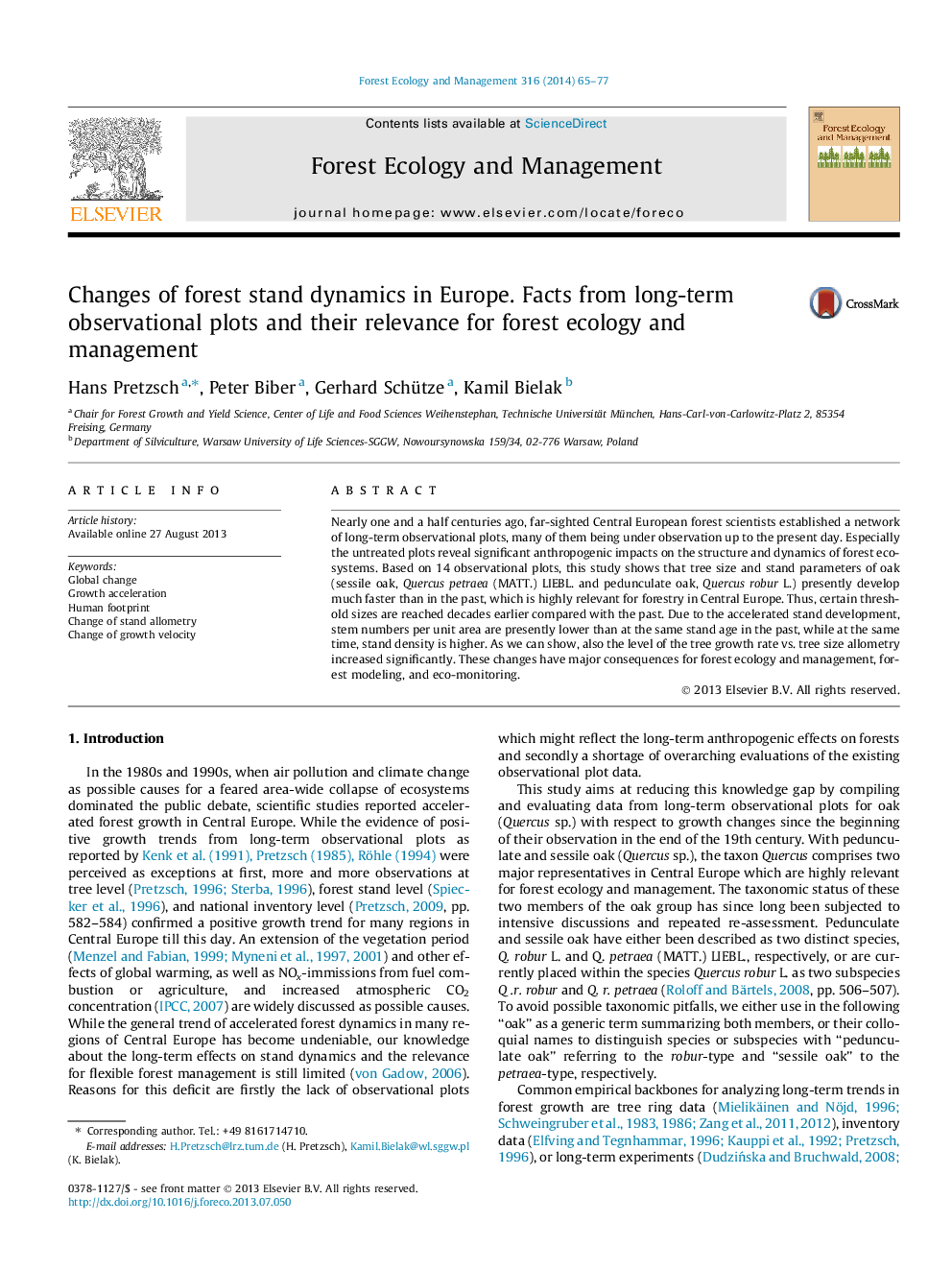| Article ID | Journal | Published Year | Pages | File Type |
|---|---|---|---|---|
| 86919 | Forest Ecology and Management | 2014 | 13 Pages |
•Long-term plots in oak stands show significant growth accelerations.•Tree size, stand volume growth, standing stock develop much faster than in the past.•Tree numbers per unit area are lower, stand density is higher than in the past.•Self-thinning line and tree growth rate vs. tree size allometry increased.•This has far-reaching consequences for forest ecology, management and carbon stocking.
Nearly one and a half centuries ago, far-sighted Central European forest scientists established a network of long-term observational plots, many of them being under observation up to the present day. Especially the untreated plots reveal significant anthropogenic impacts on the structure and dynamics of forest ecosystems. Based on 14 observational plots, this study shows that tree size and stand parameters of oak (sessile oak, Quercus petraea (MATT.) LIEBL. and pedunculate oak, Quercus robur L.) presently develop much faster than in the past, which is highly relevant for forestry in Central Europe. Thus, certain threshold sizes are reached decades earlier compared with the past. Due to the accelerated stand development, stem numbers per unit area are presently lower than at the same stand age in the past, while at the same time, stand density is higher. As we can show, also the level of the tree growth rate vs. tree size allometry increased significantly. These changes have major consequences for forest ecology and management, forest modeling, and eco-monitoring.
Graphical abstractFigure optionsDownload full-size imageDownload as PowerPoint slide
